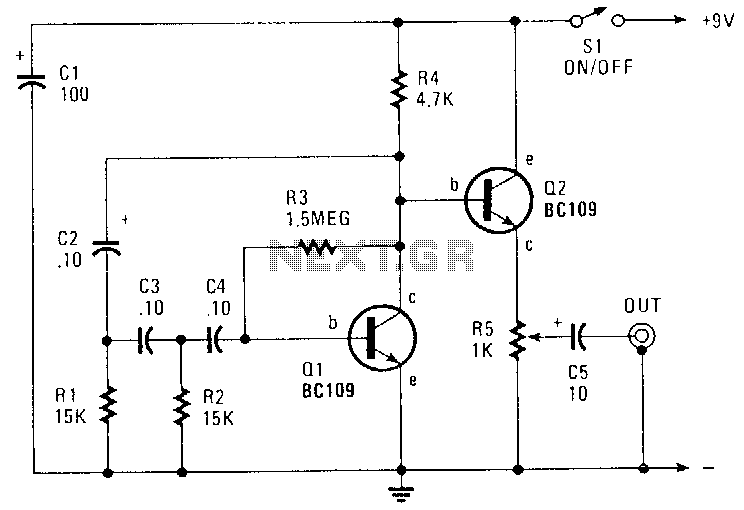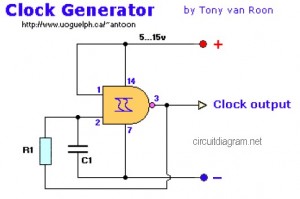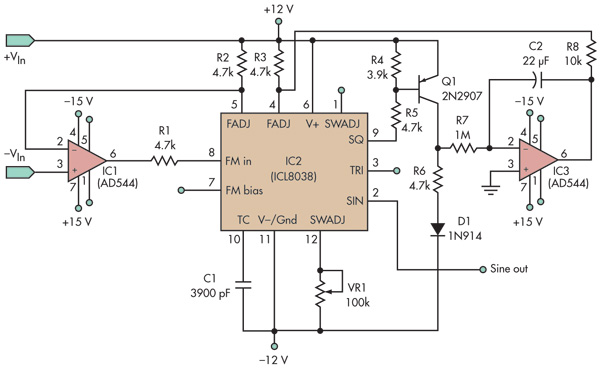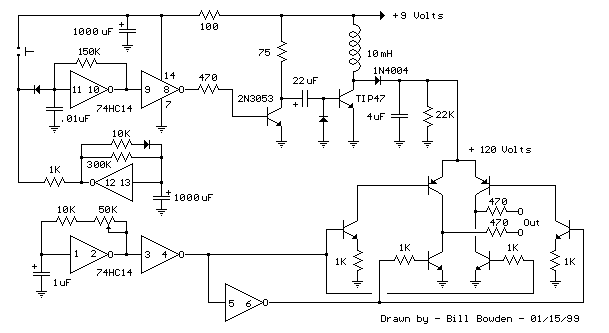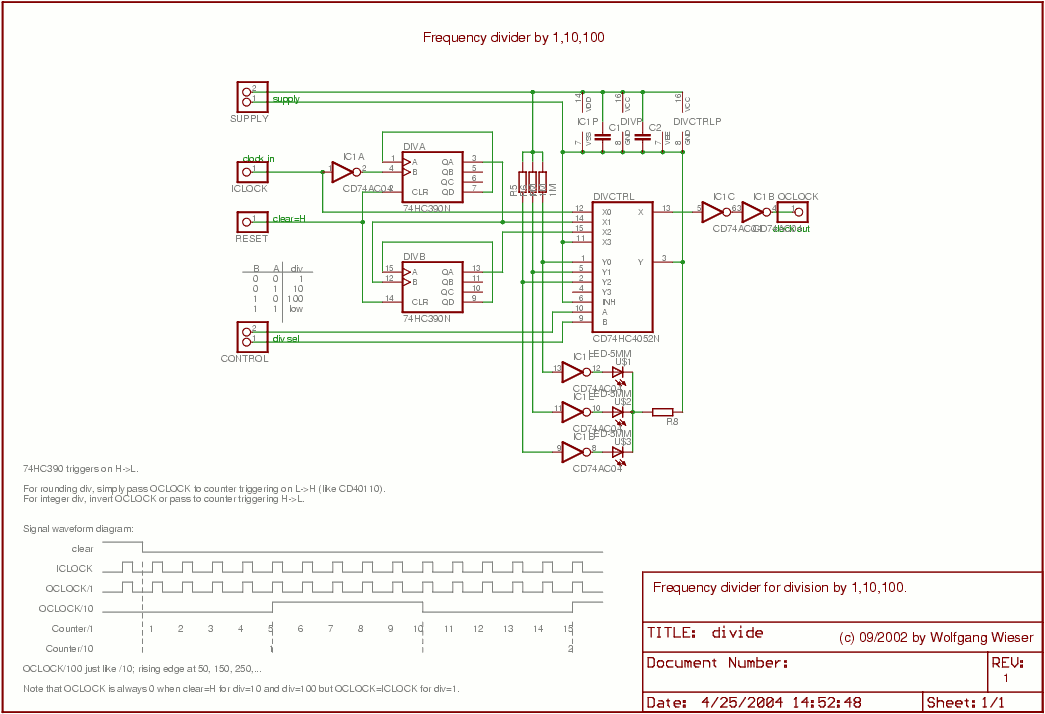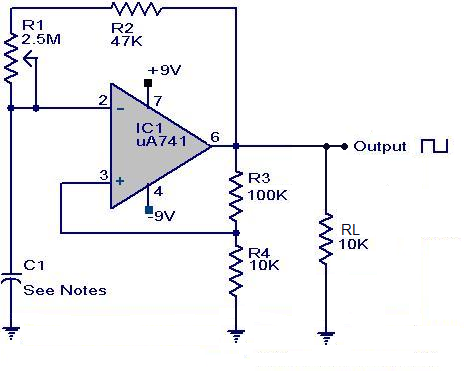
high frequency waveform generator

This circuit represents a waveform generator, which is highly beneficial for electronic experiments and design. It primarily generates sine wave oscillations, but the circuit can be modified to produce triangle or square wave functions. The circuit is based on a MAXIM integrated circuit (IC), which provides the necessary functionality to construct a waveform generator or function generator. Several modifications can be implemented to create a comprehensive waveform generator circuit.
The waveform generator circuit typically utilizes a MAXIM IC, such as the MAX038, which is designed to generate various waveforms with high precision. The core functionality of the circuit revolves around the IC's ability to produce sine, triangle, and square waves by adjusting external components, such as resistors and capacitors, that set the frequency and amplitude of the output signals.
To create a sine wave output, the circuit employs a phase-locked loop (PLL) within the IC that generates a stable frequency. The output can be fine-tuned using a variable resistor or potentiometer, allowing for precise control over the waveform characteristics. For triangle and square wave outputs, additional configuration of the feedback loop and output stage can be implemented. This may involve integrating comparators and additional filtering stages to shape the waveform accordingly.
The circuit's power supply requirements should be considered, as the MAXIM IC typically operates within a specific voltage range. Proper decoupling capacitors should be placed close to the power pins of the IC to minimize noise and ensure stable operation.
Furthermore, the output stage may include buffer amplifiers to drive loads effectively without distortion. The design can also incorporate adjustable output levels and impedance matching components to suit various applications, such as testing audio equipment, simulating sensor outputs, or serving as a clock signal for digital circuits.
In conclusion, the waveform generator circuit based on a MAXIM IC is versatile and can be tailored to meet specific needs by modifying component values and configurations, making it an essential tool in electronic design and experimentation.This is the circuit of waveform generator. Waveform generator is very useful in electronic experiment and design. This circuit is generates sine wave oscillation, but actually we can modify the circuit to generate triangle or square wave function. This is the figure of the circuit. This circuit is based on MAXIM IC. This integrated circuit chip gi ves complete function to build a waveform generator/function generator. Here some of modifications that can be used to build a complete waveform generator circuit: 🔗 External reference
The waveform generator circuit typically utilizes a MAXIM IC, such as the MAX038, which is designed to generate various waveforms with high precision. The core functionality of the circuit revolves around the IC's ability to produce sine, triangle, and square waves by adjusting external components, such as resistors and capacitors, that set the frequency and amplitude of the output signals.
To create a sine wave output, the circuit employs a phase-locked loop (PLL) within the IC that generates a stable frequency. The output can be fine-tuned using a variable resistor or potentiometer, allowing for precise control over the waveform characteristics. For triangle and square wave outputs, additional configuration of the feedback loop and output stage can be implemented. This may involve integrating comparators and additional filtering stages to shape the waveform accordingly.
The circuit's power supply requirements should be considered, as the MAXIM IC typically operates within a specific voltage range. Proper decoupling capacitors should be placed close to the power pins of the IC to minimize noise and ensure stable operation.
Furthermore, the output stage may include buffer amplifiers to drive loads effectively without distortion. The design can also incorporate adjustable output levels and impedance matching components to suit various applications, such as testing audio equipment, simulating sensor outputs, or serving as a clock signal for digital circuits.
In conclusion, the waveform generator circuit based on a MAXIM IC is versatile and can be tailored to meet specific needs by modifying component values and configurations, making it an essential tool in electronic design and experimentation.This is the circuit of waveform generator. Waveform generator is very useful in electronic experiment and design. This circuit is generates sine wave oscillation, but actually we can modify the circuit to generate triangle or square wave function. This is the figure of the circuit. This circuit is based on MAXIM IC. This integrated circuit chip gi ves complete function to build a waveform generator/function generator. Here some of modifications that can be used to build a complete waveform generator circuit: 🔗 External reference
